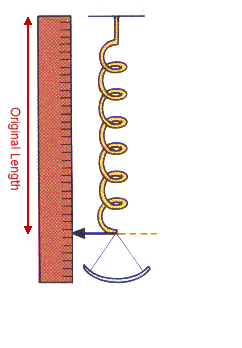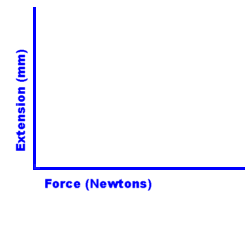
"Hooke's Law" is about stretching springs and wires.When we apply a force to a spring, it stretches. If we apply double the force, it stretches twice as much, so long as we don't over-do it. So far, this is pretty obvious. Now let's look in more detail... We measure the original length of the spring when we start. When it stretches, we measure the extension - that's how much longer it is than it was when we started. Extension = present
length – original length |
If this picture
isn't moving, click on "Refresh"/"Reload"
 |
|
|
|
The elastic limit is where the graph departs from a straight line. If we go past it, the spring won't go back to its original length. When we remove the force, we're left with a permanent extension. Below the elastic limit, we say that the spring is showing "elastic behaviour": the extension is proportional to the force, and it'll go back to it's original length when we remove the force. Beyond the elastic limit, we say that it shows "plastic behaviour". This means that when a force is applied to deform the shape, it stays deformed when the force is removed. We use Hooke's Law in spring balances, kitchen scales and other devices where we measure using a spring. We use a more complete version (called "Young's Modulus") when designing bridges, aircraft and other engineering projects. |
If this picture
isn't moving, Note:
the point on the graph where it departs from a straight line is
really called the "limit of proportionality". |
Spring
Questions (click
on the question to reveal the answers)
